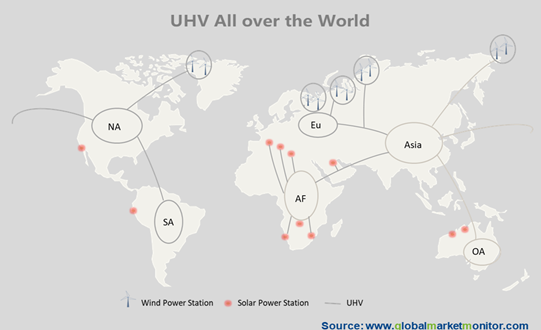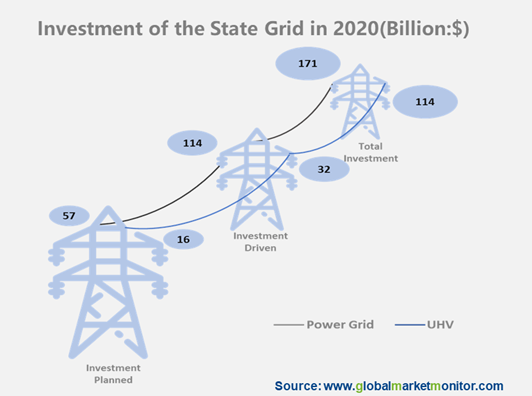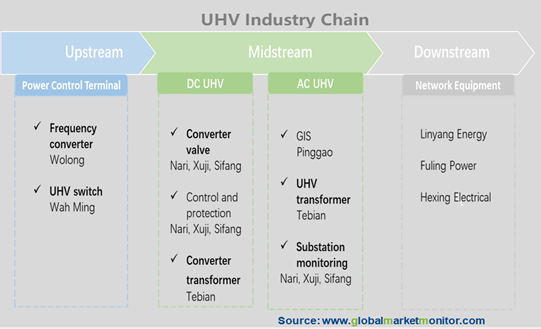China is vast in territory and rich in products, whose only shortage is the uneven distribution of resources. It shows the situation that the economy and resources are not matched. 76 percent of coal resources in China are distributed in the north and northwest and 80 percent of water energy in the southwest; the vast majority of land wind and solar energy resources are distributed in the northwest. At the same time, more than 70% percent of the energy demand is concentrated in the eastern and central regions. In the past, China transported the coal resources in the northwest to the southeast coastal cities by railway, which can solve the resource allocation to some extent. But there are many disadvantages in this way, such as high loss rate, and sensitivity of the geographical environment and climate change. In the ice disaster in 2008, it cut off the transportation of resources, which had a terrible impact on the social economy. At the same time, the rich photovoltaic resources and solar energy in the northwest are difficult to be transported to all parts of the country by railway, so it is high time to find other ways to transport resources to meet our demand. The introduction of UHV can settle these problems well.
It is generally divided into five categories of voltage level in China: low voltage, medium voltage, high voltage, ultra-high voltage, and ultra-high voltage. UHV refers to the voltage level of above 800 kV of DC and above 1000 kV of AC, which is equivalent to more than 600,000 batteries, about 33 kilometers long. With the rapid stage of industrialization and urbanization, energy, as an essential element of social and economic development, the demand for it in our country is expanding in several orders of magnitude. As a clean and easy-to-use energy, electric power plays an extremely important role in the energy industry and is an indispensable power for the progress and prosperity of the country.
The distribution of products in China determines the important position of UHV. As an essential part of "new infrastructure", the economy is currently affected by the epidemic situation under downward pressure, and UHV gives full play to its supporting role. Secondly, clean energy bases in China have a strong demand for external transmission. We believe that the construction of a new energy base will continue to advance, which brings new demand for external transmission and supporting UHV projects. In addition, referring to a large amount of remaining work in the current UHV network between the East and the North, UHV is expected to continue to be promoted in the future with the coordination of The AC circuit and DC transmission to ensure sufficient capacity.
Global Energy Internet Provides Endless Development Opportunities for UHV
Many countries are similar to China in the world, which have an extremely unbalanced resource distribution. How to efficiently solve the problem of resource transportation has become a common global problem with a beautiful answer submitted by China to provide valuable experience for many countries. For Brazil, a vast region, nearly 80 percent of the electricity demand is provided by large hydropower stations, which are concentrated in the northwest, while the load is concentrated in the large cities in the southeast. China's project settles the problems between energy distribution and load separation to build the UHV project and realize the power transmission. The project has not only been affirmed and supported by the Brazilian government but also attracted the general attention of South and Central American countries, providing a demonstration for UHV technology services in central and South America. China proposes to explore the construction of a global energy Internet and promote clean and greenways to meet global power demand. UHV is the most advanced transmission technology in the world at present, and only by UHV, can the power transmission be realized in the global scope. The development prospect of the UHV industry is difficult to estimate.

Though nearly 10 years of continuous investment, China has formed a relatively complete operation network of UHV with stable improvement of the line length and transformation capacity. Up to now, there are 25 in operation lines, 7 in construction, and 7 new approved lines, which brings a market space of about 21.4 billion USD according to the 285 million USD for 7 new UHV. According to the plan of the state grid in 2020, the investment of the power grid is more than 57 billion USD, which can drive more than 114 billion USD of social investment, with the overall scale reaching 171 billion USD.

UHV Industry Chain
As the epidemic has brought an economic slowdown, the government increased UHV investment, causing UHV investment exceeding expectations, in which many enterprises in the industry chain will benefit from it, then, boost the economy. From the perspective of the UHV industrial chain, UHV can be divided into DC transmission lines AC transmission lines. The former involves the key equipment including converter valve, converter, and DC field equipment, and etc. And the later includes combination appliances, transformers, and reactors, and


We provide more professional and intelligent market reports to complement your business decisions.